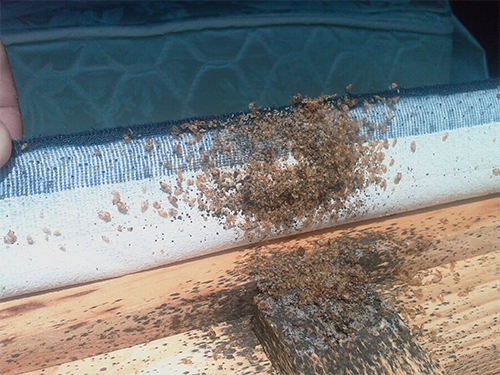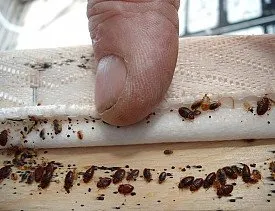Professional A1 Bed Bug Exterminator in Houston - Efficient Solutions
Comprehending the Lifecycle of Pests for Targeted Control Approaches
Recognizing the lifecycle of insects is a fundamental facet of efficient pest monitoring techniques. By comprehending the numerous stages of growth that pests undergo, a more targeted and accurate method can be embraced to manage their populations. This understanding not only clarifies the vulnerabilities within the parasite lifecycle yet additionally paves the way for implementing critical steps that can interrupt their growth and recreation cycles. Through a much deeper understanding of just how insects develop and thrive, tailored control approaches can be developed to resolve particular factors in their lifecycle, ultimately resulting in even more successful bug monitoring outcomes.
Value of Recognizing Pest Lifecycle
Comprehending the lifecycle of bugs is crucial for developing efficient and targeted control methods in parasite monitoring. By comprehending the various stages an insect goes with from egg to grownup, bug control specialists can recognize vulnerable points in the lifecycle where intervention can be most successful. For example, recognizing when larvae are most active can assist identify the ideal timing for applying larvicides. Additionally, understanding the lifespan of an insect species can aid in predicting populace development patterns and potential invasion risks.
Moreover, identifying the details ecological conditions essential for each and every phase of the insect's lifecycle can guide choices on environment modification or exemption techniques to interrupt the lifecycle and reduce insect populaces. This understanding enables pest monitoring experts to execute aggressive procedures rather than counting exclusively on reactive therapies, resulting in even more lasting and long-term parasite control services. Ultimately, a complete understanding of insect lifecycles encourages pest control experts to tailor their methods effectively, making best use of and lessening ecological impacts control results.
Key Stages in Parasite Development
To efficiently apply targeted control techniques in bug management, an important facet lies in thoroughly determining and understanding the essential phases in parasite development. Bug growth generally contains numerous key stages that are important for their lifecycle and monitoring. The initial stage is the egg stage, where bugs lay eggs that later on hatch out into larvae. Larvae then advance right into pupae, a phase where they undertake transformation before emerging as adult insects. Comprehending these phases is crucial as it helps in pinpointing weak spots in the lifecycle where control procedures can be most reliable.

Susceptabilities in Insect Lifecycle
Throughout the different stages of a pest's lifecycle, unique susceptabilities emerge that can be tactically targeted for reliable control measures (A1 bed bug removal houston). One crucial vulnerability exists in the egg phase, where pests are typically extra susceptible to certain insecticides or organic control representatives due to their soft external covering, making them easier targets for intervention. Comprehending these susceptabilities in the parasite lifecycle is essential for developing reliable and specific control strategies that effectively manage insect populations while lessening ecological effect.
Applying Targeted Control Actions

Carrying out targeted control actions generally includes a multi-faceted strategy. This may consist of environment adjustment to make the atmosphere much less congenial to bugs, such as removing standing water for insect control or securing entrance factors for rats. Furthermore, biological control techniques can be used, where natural predators or microorganisms are presented to keep insect populations in check.
Chemical control, such as the mindful application of chemicals, is another common technique. Nevertheless, it is vital to use these substances sensibly to reduce environmental effect and prospective injury to non-target varieties. Integrated Bug Administration (IPM) methods that integrate different control procedures in a collaborated and sustainable manner are frequently the most effective in attaining lasting bug administration goals. By executing targeted control steps based on a thorough understanding of parasite lifecycles, parasite populaces can be efficiently controlled while minimizing threats to human wellness and the atmosphere.
Enhanced Parasite Administration Practices

Furthermore, the consolidation of biological control agents, such as all-natural predators or virus of insects, can help in reducing dependence on chemical pesticides and promote a much more well balanced environment. Implementing physical barriers and catches can also be component of boosted insect monitoring practices, using safe and targeted services for bug control. Additionally, using scents and various other semiochemicals can interrupt pest mating patterns and communication, causing lowered insect populaces with time.
Conclusion
To conclude, recognizing the lifecycle of pests is important for reliable pest administration methods. By recognizing key stages in bug growth and susceptabilities in their lifecycle, targeted control measures can be executed to lessen parasite populaces. Enhanced insect administration methods can help in reducing the dependence on broad-spectrum pesticides and promote more sustainable and ecologically friendly bug control approaches. This expertise plays an essential role in maintaining healthy ecosystems and agricultural productivity.
Understanding the lifecycle of pests is crucial for creating reliable and targeted control methods in insect management. By comprehending the numerous phases an insect goes through from egg to grownup, parasite control experts can identify vulnerable factors in the lifecycle where intervention can be most successful. Inevitably, a detailed understanding of bug lifecycles equips pest control experts to customize their techniques effectively, maximizing and decreasing ecological impacts control end results.
By carrying out targeted control measures based on a thorough understanding of bug lifecycles, insect populaces can be efficiently regulated while lessening risks to human wellness and the environment.
By recognizing essential phases in insect growth and vulnerabilities in their lifecycle, targeted control measures can be carried out to minimize bug populaces.